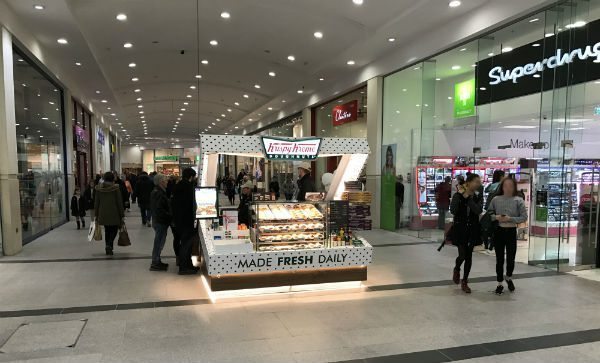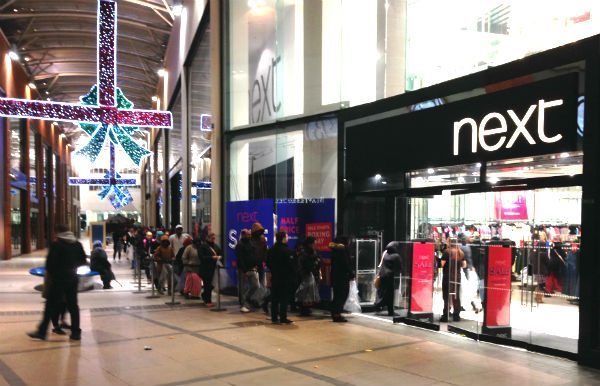Experiential Retailing: The Next Phase of the Millennial Shopping Journey?
Small versus Large Store Format
Do you remember when small shops were locally owned businesses? Before the large supermarket chains and grocery retailers took over our towns and cities?
Well, about 15 years ago, I used to pick up my morning coffee, some really tasty pastries, and a newspaper on my way to the office. The staff knew me, and I knew them.
Back then, customer service basically involved knowing and relating to each and every customer at an individual level.
As surprising as it may seem in today’s digital era, we’re going back to that. And by “that”, I mean offering personal services to customers for a truly personalised experience, as also confirmed by an article from entrepreneur recently published by Entrepreneur.
Now, let’s try to answer the question in the back of your mind: Do today’s customers really want a personalised shopping experience enhanced by the human touch?
Although many marketing experts argue that millennials are wildly different from Gen Xers and Baby Boomers, they paradoxically also crave true, authentic, personalised shopping experiences, which include human interaction.
An Unexpected Response from Retailers: “Small” is the Next Big Thing

As expected, retailers cannot ignore the new customer demands. In fact, many of them have already embarked on a new “quest”, which basically involves going from the big-box store concept to the “small” retail model, as in smaller, more independent, more community-oriented shops, with better products and services.
One retailer that has already started to introduce smaller-scale shops, as it expands in urban locales (and, obviously, captured my attention) is Pets at Home.
Focusing on the adoption of a new “smaller-is-better” ideology, this retailer has realised one important thing: all big shops look pretty much the same, offer the same merchandise at the same price, run the same sales promotions, and provide the same services. In other words, the big retailers “market” the same discouraging monotony.
But the downsizing effort of mass retailers isn’t necessarily the most important part of my story; after all, anyone can make a store smaller in size. The most important part is to find a way to make a store smaller at “heart”.
This is what Pets at Home is trying to do. After many years of following the big-box retailing “path”, Pets at Home has decided to go in a different direction and created a new store concept, called Barkers.
Targeted at offering a different kind of shopping experience to the customers who have finally gotten tired of the “austere” lifestyle they adopted after the recession, a Barkers store is nothing more than a smaller, more intimate and approachable local shop specifically designed for local people. Barkers provides new, different, specialised, personalised—in a word, better—customer-centric experiences that Pets at Home hadn’t been able to achieve as a mass retailer.
Thinking about all these things, it seems “we have reached the apogee of the big box”, as retail guru Paco Underhill said.
Although the ascendancy of national chains and economies of scale have proven themselves, the independent retail sector is undergoing a renaissance as you read these lines.
Currently, a number of economic, demographic and cultural trends are lining up to create a more favourable climate for small, independent local retailers who are able to deliver new, different shopping experiences most customers desire.
But in addition to requiring a more personalised shopping experience enhanced by the human touch, the millennial customer has decided to favour “social justice” – which is something we’ve expected from a social savvy generation.
As increasing numbers of customers recognise that high street stores create jobs and the money they spend remains in the community, more people are supporting independent, locally owned businesses that contribute to the community.
Does this mean that the big-box retail model is a dying breed?
Well, it depends. Whilst the enormous, one-size-fits-all approach might not work for all brands, locations and customers, big-box retailers can be successful as long as they provide best-in-class customer service.

In fact, many mass retailers are already making efforts to take their current retail environments and customer service to the next level.
As Leon Edwards, Managing Director of DisplayMode, has recently said in an interview, “big retailers are looking at ways of trying to get slightly more experiential, get a bit more customer engagement, a bit more value”. Therefore, today’s big retailers are trying to get “from where they’re now, and be different from what people see them: as a commodity”, he added.
If you look around at some brilliant industry examples, you’ll discover that personal customer service has helped many big retailers become successful.
For instance, Amazon is one of the online retailers that regularly top the charts for outstanding services. Almost anyone knows how helpful and flexible their support team is. That’s because personal customer service is deeply rooted in their company’s culture. Passionate about offering the best possible shopping experience to customers, Jeff Bezos, the founder and CEO of Amazon, periodically leaves a chair empty in the boardroom to remind everyone that the customer is the most important “person” in the company, though he’s not physically present at the conference table.
Another great example is Nordstrom. Although this retailer sells a wide variety of products, its strongest selling point remains personal customer service. A few highlights include, without being limited to:
- ringing up purchases, so customers don’t have to stand in line;
- walking customers instead of just pointing to the areas where products are located;
- designating salespersons to assist the customers who indicate the desire to shop;
- answering phone calls on no more than the second ring;
- providing separate checkout counters by department.
At DisplayMode, we also believe that personalised human interaction will make a strong comeback in the years ahead. Whilst our millennial customers typically opt for innovative technologies to get the best display solutions for their retail environments, most of them prefer to get in touch with our knowledgeable professionals when they need guidance.
All these confirm the findings of a recent study accenture from Accenture, which has concluded that 77 percent of today’s consumers value more human assistance than digital support. Additionally, many industry watchers attest that human interaction and personal service are becoming two key differentiating factors across the retail industry. Simply put, “retail cannot exist without service”, as Guardian said.
However, many business professionals instinctively assume that millennial shoppers don’t want assistants asking, “Hello, can I help you?” as most of them know what they want before entering a shop. But what happens when they’re unable to find a product? Or when the application that contains information about the product they want to purchase doesn’t load? Or when they want to return an item? This is where the store assistants step into the picture.
Therefore, when it comes to millennial shoppers, personalised customer service isn’t only about complementing the retail environment with engaging in-store digital elements and offering basic services but also about the sales and service assistants, whose roles have become more critical to a positive or negative retail experience.
Going further down the road, one essential question more and more retailers want answered in the ever-changing, increasingly competitive retail environment is: “Will people choose to shop at small, locally owned businesses or at big-box stores?” Although the biggest new trend in retail indicates a progressive shift towards smaller local shops, I guess we’ll just have to wait and see. After all, the customer is the one who calls the shots. What do you think of experiential retail?